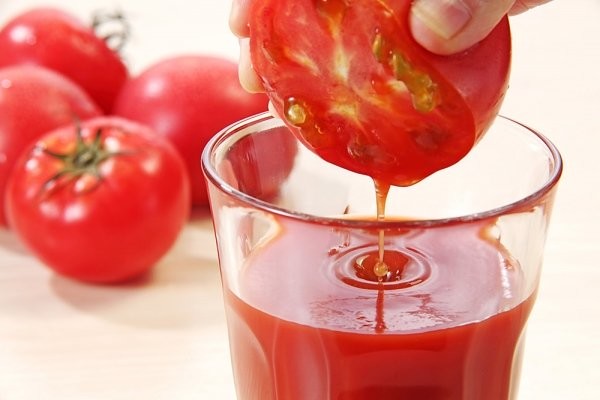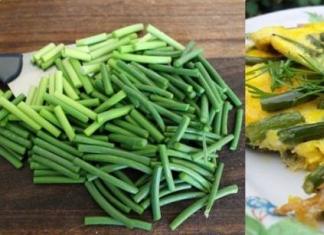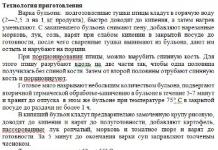The benefits of vegetable juices have been proven for a long time. Tomato juice is no exception. This delicious drink comprehensively supports and strengthens the body, protecting it from diseases and illnesses. The nectar of fresh tomatoes perfectly quenches thirst in hot weather; it can also be preserved for the winter. However the right recipe Not everyone knows the real tomato drink, and making it takes a lot of time. It is much easier to prepare it from tomato paste. This product is no less healthy and tasty. Let's take a closer look at how to prepare tomato juice from paste and analyze it healing properties.
Choosing a tomato base
Transforming tomato paste into juice is very simple; all you need is water, salt and tomato base. The latter must be of high quality, not cheap and not contain preservatives or additives.
Homemade tomato juice can be drunk pure or added to cocktails, meat and vegetable dishes, sauces, and soups. Its factory equivalent is not cheap, so by making juice from paste, you can save a lot. In addition, the drink will be no different from its counterparts flaunted on store shelves. After all, only a small percentage of manufacturers produce a truly high-quality product made from natural tomatoes. In most cases, the same tomato paste, water, salt and beautiful packaging are used.
Attention! To make juice, use only tomato paste, not sauce or ketchup. In this case, the percentage of dry components in it should be at least 25 (ideally 25-40%). The product must contain only two main ingredients: water and salt.
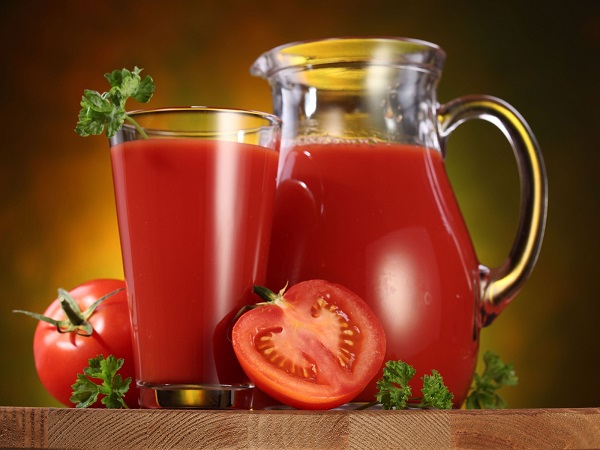
Checking the quality of the paste is simple: shake the jar; if there is too much liquid in it, and the consistency is similar to the density of inexpensive ketchup or sauce, you have a product of dubious quality.
Recipes
Dilute the tomato base with cold boiled water - 1 part paste to 3 parts liquid. To prepare liquid juice, focus on the ratio: 1 tbsp. spoon of paste per 1 glass of purified water. If you prefer a thicker drink, take 2-3 tbsp per glass of water. spoons of raw materials. The juice should be salted with coarse table salt. In addition to salt, you can also add sugar or pepper - they will add new sensations to the taste. Many gourmets drink tomato juice with spices - marjoram, rosemary, thyme. It is recommended to drink the drink chilled.
What are the benefits of pasta?
To obtain tomato paste, tomatoes are pureed and then heat treated. During the boiling process, moisture evaporates from the concentrated mass, and the dry matter content in it, on the contrary, increases. The finished product is used for preparing liquid dishes - soups and sauces, for stewing meat and vegetables.
If the paste does not contain any concentrates and is a natural product made only from tomatoes, it has full beneficial properties. Therefore, before making tomato juice, carefully select the base.
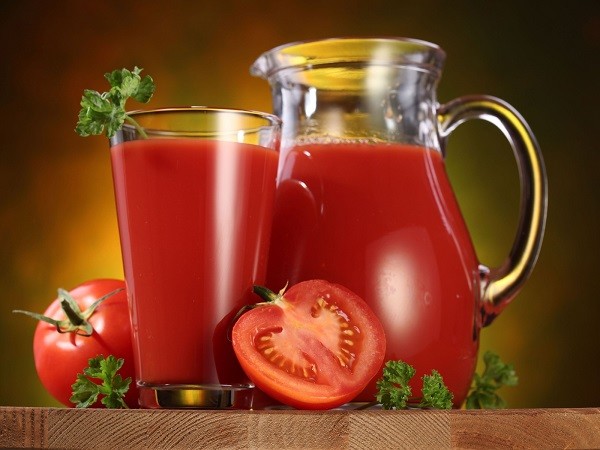
High-quality tomato paste contains potassium, calcium, iron and magnesium, making it beneficial for muscles and bones. The acids it contains (citric and malic) improve metabolism and digestive processes. Vitamins B and C eliminate malfunctions nervous system, improve the condition of hair, increase the strength of nails.
Attention! Tomato paste is low in calories - only 23 kcal/100 g. Therefore, juice prepared from it is absolutely harmless for patients with diabetes and people on a diet.
About the healing qualities of tomatoes
Tomatoes, which serve as the basis for tomato paste, are essential for health. They contain many valuable minerals, including:
- iron, phosphorus, magnesium, copper, potassium, calcium, which help keep the body in good shape;
- fiber, good for digestion;
- the antioxidant lycopene, which has anticancer effects;
- vitamins A, E, C, B5, B6, B9, PP, K, which are responsible for the smooth functioning of internal organs and systems;
- folic acid, which stimulates the circulatory and immune systems.
Tomatoes have no equal in their ability to restore strength to a person and strengthen the immune system. It's not only delicious product, but also an effective medicine. Ripe tomatoes have antibacterial, anti-inflammatory and soothing effects, improve the functioning of the stomach and intestines, and relieve toxicosis in pregnant women.
Juice made from fresh tomatoes fully retains their healing properties and is included in the list of the most essential products for health.
How to make tomato juice from fresh tomatoes
Recipe No. 1
Select tomatoes for the recipe that are ripe and undamaged. After washing them with running water, pass them through a meat grinder and remove the skin. For express preparation, you can use a juicer.
Pour the tomato mass into an enamel container and simmer over low heat until the foam bubbles completely disappear from the surface. If the juice is being prepared for the winter, it should be poured into sterilized jars while hot.
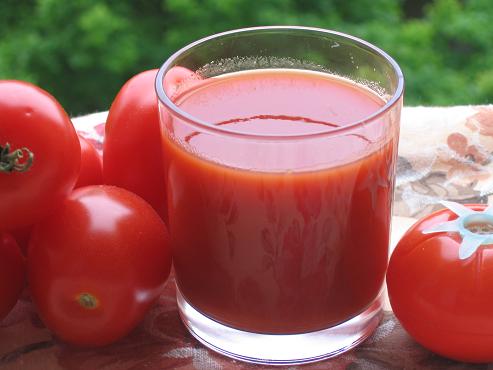
Recipe No. 2
This recipe differs from the first one in that instead of a juicer, a sieve is used. Whole, ripe tomatoes should be cut into slices and rubbed through a fine sieve. Then pass the mixture through a gauze filter. Add salt and sugar to the resulting juice, boil (as in the first recipe) and pour into sterilized jars.
Grown at our own dacha, it is among healthy products nutrition. It contains vitamins C and B, potassium, calcium, magnesium, iron, malic and citric acids. The usefulness of the drink lies in the fact that its components strengthen nails and hair, improve metabolism, and support the condition of diabetes mellitus and promote weight loss.
Unfortunately, people do not always have the opportunity to grow vegetables in garden beds. For this reason, he buys his favorite drink in the store, overpaying for bright packaging, delivery of goods and the deception of the seller, who wants to make a profit at the expense of inattentive customers. If you look closely at the packaging, it is not difficult to discover what the drink consists of - tomato puree, water and salt. So is it worth overpaying in the store for something that is very easy to do at home and get a quality product?
How profitable is it to make pasta juice at home?
A simple calculation showed that one can of ready-made tomato paste produces 3 liters of tomato juice (at a ratio of 1: 6). By salting the drink, the consumer will not feel any difference in taste and will quickly get the desired product. The cost of a half-liter jar of paste is 50 - 70 rubles. The cost of 1 liter of juice costs a meager amount - 16 - 25 rubles.
But to prepare a vegetable drink, you need tomato paste. Ketchups and sauces are not suitable for this purpose. The proportion of dry substances in the product composition should vary between 25 – 40%. The content of additives such as acidity regulators and sugar in the composition is not recommended; only salt and water are allowed.
How to check the quality of a product? Shake the jar and evaluate the consistency of the contents. If there is too much liquid in the container, and the consistency of the paste resembles sauce or ketchup, there is reason to doubt the quality of the product being offered.
When the puree is made correctly, the tomatoes are pureed and heat treated. Then the raw materials are boiled to evaporate moisture and increase the proportion of dry matter. If the vegetable puree does not contain concentrates, beneficial properties in the human body it will manifest itself fully. Careful selection of the base for tomato juice is the key to enriching the body with valuable substances.
Store-bought juice sells for 30–40 rubles per liter. It contains additives, and the cost is four times higher than the price of juice made from paste. This begs the question: what is the point of paying more if you can dilute the puree with water, salt it and drink it without worrying that the body will not receive much useful substances? Let's learn how to make tomato juice yourself from homemade tomato paste. Surely you have prepared it for future use.
How to make juice from tomato paste: a simple recipe
 There is only one recipe for obtaining tomato juice from tomato paste, which is considered classic. According to his rules, vegetable puree is diluted with cool boiled water at the rate of 1: 3. To obtain a thick drink, take 2 - 3 tbsp per 1 glass of water. l. raw materials. If you need a liquid product that resembles water in consistency, then dilute 1 tbsp in a glass of water. l. pasta.
There is only one recipe for obtaining tomato juice from tomato paste, which is considered classic. According to his rules, vegetable puree is diluted with cool boiled water at the rate of 1: 3. To obtain a thick drink, take 2 - 3 tbsp per 1 glass of water. l. raw materials. If you need a liquid product that resembles water in consistency, then dilute 1 tbsp in a glass of water. l. pasta.
Season the juice with coarse table salt. Add a little sugar or pepper if desired. Some people like a drink with spices - thyme, marjoram, rosemary. In any case, it is better to consume it chilled.
Which product is healthier - prepared at home or bought in a supermarket? There is no exact answer to this question, since vegetable grounds and ready-made juice sold in the store may differ in composition. There is even an opinion among consumers that 85% of vegetable juices are made from tomato puree. Therefore, it is much healthier to make tomato juices from the tomato paste that was prepared at home.
Application
Knowing how to make tomato juice from tomato paste, housewives should study recipes for dishes where this healthy liquid will be added. The juice can be drunk in its pure form. It can also be added to soups, vegetable and meat dishes, sauces and cocktails. A product made from natural tomatoes is strikingly different in quality from store-bought counterparts.
Remember that no matter how colorful or simple the packaging is, it usually has the same contents - paste, salt and water. But what kind of tomatoes this product was prepared from and whether the production technology was followed, consumers cannot know. Therefore, it makes sense to process it into juice as needed.
For most domestic consumers, it has long been no secret that natural vegetables and fruit juices are practically not available for sale. Most fruit juices are produced by diluting with water and bringing concentrated juice produced in special factories to the required consistency. Vegetables, for example, carrots and pumpkin, are produced using the same technology from thickened puree, tomato juice is made from tomato paste. This is due to the fact that it would ensure uniform loading of juice production plants throughout the year. This is understandable: prepare, process huge amount It is possible to produce fruits in a short season, but the issue of storage, transportation and uniform supply of the finished product to the population becomes quite labor-intensive and costly.
In addition, the blatant deception of consumers is aggravated by the introduction of the term “nectar”, thanks to which some manufacturers are trying to legally reduce (sometimes up to 40 percent) the juice content in the drink, without particularly bothering to reduce the price.
Yes, some juices, for example cherry, are not enjoyable to drink in their pure, 100% form, and indeed, to improve the taste, such juices need to be made into nectar, but when the packaging says “apple nectar” or “orange nectar”, that’s just a trick of a manufacturer trying to manipulate quality and price, and legally.
Now let's move on to tomato juice. If manufacturers make it from tomato paste, why can’t we make it at home and what is the cost? Naturally making tomato juice at home is extremely easy! As for the price component, everything is very simple here. 1 liter of tomato juice, depending on the manufacturer, costs from 40 to 60 or more rubles. For example, the retail price of Dobry juice, with a capacity of 1 liter, in one of the popular chain supermarkets is about 50 rubles. Liter jar Tomato paste "Kuhmaster" shown in the photo cost 54 rubles.
It has been empirically established that to obtain high-quality juice, it is necessary to dilute the paste with boiled water in a ratio of 1:5 or 1:6 (this depends on the quality of the original product and personal preferences). It is easy to calculate that the cost of such juice will be about 10 rubles per liter!
Therefore, the manufacturing technology is very simple: put tomato paste in a jar or glass, pour in chilled boiled or mineral water, in a volume six times more than the paste taken, add salt to taste, if you want sugar or pepper, mix thoroughly, and the juice is ready! The main rule is that the juice should not be too thick or translucent.
More specifically: for a 200-gram glass, take 2-3 teaspoons of pasta with a very large top and 1/4 teaspoon of salt without top. The rest is up to personal preference.
The starting product is tomato paste. For a 200 gram glass, 3 large teaspoons are enough.
Ready tomato juice in a glass! Salt is added to taste, approximately 1/4 - 1/3 level teaspoon per 200 gram glass.
In conclusion, a few words about tomato paste. Depending on the manufacturer, it can be better or worse, more expensive or cheaper. What is more expensive is not always better. Even the presence of starch as a thickener does not indicate that the paste is bad, starch is a natural product and usually its content per liter of finished tomato paste does not exceed several grams. Remember that by emphasizing the “naturalness” of the product, manufacturers often deliberately inflate the price. Don't fall for this trick, be careful!
In general, the Iranian tomato paste was very good. Great quality and great price! However, it has not been on sale for a long time!
Tomato is incredibly healthy and delicious vegetable, which is widely used in cooking. It contains all the minerals necessary for the body, and there are also such deficient ones as magnesium and iron. Tomatoes are one of the main sources folic acid, necessary for the body for immune and circulatory system. In addition, tomato contains many healthy vitamins, especially ascorbic acid and some B vitamins. It also contains fiber, which stimulates digestion.
That is why, for many conditions that require stimulation of the immune system, mainly accompanied by a loss of strength, tomatoes can serve not only as food, but also as medicine. They will also help with diseases of the blood vessels and with some types of toxicosis in pregnant women. Moreover, you can use not only fresh tomatoes, but also the juice itself. This juice is tasty and healthy even healthy people, this is one of those few drinks that is not sweet, but tastes good. And preparing tomato juice at home, if desired, is not at all difficult.
In general, the most best juice– This is natural, squeezed from ripe fruits or vegetables immediately before consumption. It can be obtained using a juicer or using a blender. But such juice is only available during the harvest season. And the juice prepared in this way must be drunk immediately.
To preserve juice for the future, it is impossible to do without heat treatment, despite the fact that canning will destroy some of the beneficial substances. There are many recipes for making tomato juice. And choosing exactly the one you like will not be difficult.
How to prepare tomato juice?
If you want to get a fairly high yield of the finished product, you need to choose fleshy varieties of tomatoes that have few seeds for distilling juice: “Alekseevna F1”, “Baloven”, “Sumoist”, since juicier tomatoes will give more juice per kilogram. Pink tomatoes give excellent results when making juice: “Korneevsky”, “Fatima”, “Pink Flamingo”.
Preparing juice should begin with preparing the tomatoes. To do this, you need to remove the seeds and skin from them, and bring the pulp to a paste. Eat different ways achieve this.
A juicer is one of the simplest and most affordable options. It retains pieces of skin and seeds, but when used, a significant amount of pulp is lost. Therefore, for many it is preferable to use a meat grinder. But in this case, it is necessary to remove the skin from the tomato. To do this, place the tomato on a fork, put it in boiling water for a few seconds, and then pour it over cold water. With this treatment, the skin is easily removed. But with this method, seeds still remain.
To obtain a more uniform consistency, tomatoes are sometimes strained through a sieve, usually a metal one. This method requires additional preparation of the fruit, since it will not work with fresh tomatoes. To begin with, boil the tomatoes until soft. Some people recommend heating for this option. chopped tomatoes directly in the pan without adding water. Others suggest first squeezing a little juice by hand, bringing it to a boil and then holding the tomato pieces on cheesecloth over it for about 5 minutes.
After obtaining a sufficiently homogeneous liquid mass, the process of preparing tomato juice for long-term storage begins.
The easiest recipe.
Chop the ripe fresh tomatoes, place them in an enamel pan, then bring to a boil. Continue cooking without salt and spices, stirring the product until the foam disappears (approximately 15-20 minutes).
Please note that the faster the initial mass warms up to boiling, the more uniform its consistency will be.
The finished juice should be immediately poured into sterilized containers - glass jars or bottles are best suited for this purpose - and sealed tightly. It is best to store this juice in a cool room (with a temperature below 12 degrees) or in the refrigerator.
The latest recipe.
To make tomato juice as reminiscent of freshly squeezed juice as possible, you need to bring chopped fresh tomatoes to a boil, then immediately pour into glass bottles, close them and sterilize for 20-25 minutes. This juice will retain all the vitamins and nutrients as much as possible.
The most delicious recipe.
Regular natural juice without added salt and spices can sometimes seem too bland. To make the juice tastier, you need to add salt and sugar to taste during cooking (about 10 minutes before readiness), and after another couple of minutes spices (pepper, vinegar, cinnamon, garlic, and so on, depending on your taste and choice). Here is one of the proposed combinations: for 2 liters of tomato juice - one teaspoon of vinegar essence, 350 g of sugar, ¼ teaspoon of ground red pepper, 3-5 cloves, 15 grains of black peppercorns.
Tomato juice from tomato paste.
I would like to note a recipe that usually causes a lot of controversy.
Most easy way How to get tomato juice at home - dilute tomato paste purchased in a store with water (approximately 2 teaspoons per glass of water). And at the same time, you get a drink that is quite similar to store-bought juice (but it will cost you much less).
But some believe that such tomato juice, obtained from tomato paste, cannot be called juice at all, and all the beneficial substances in such a product are killed by the cooking technology (meaning prolonged heating). This is a misconception. Evaporation is not used in the production of tomato paste. The fruit pulp is separated from the juice using a special centrifuge.


